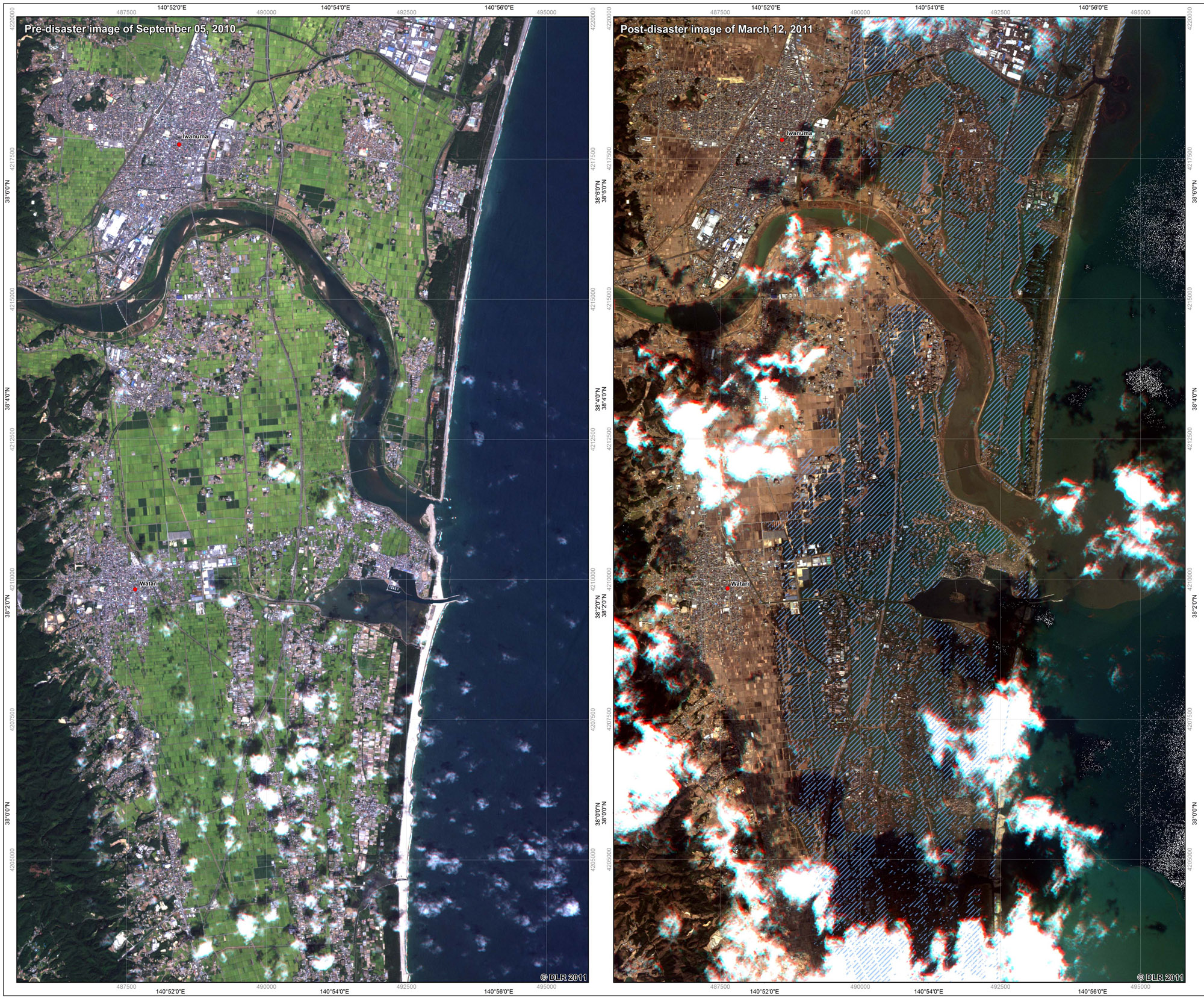Japan Disaster Recovery Efforts Get Help From Satellites

In the aftermath of Japan's devastating earthquake and tsunami, satellite maps have been a vital part of search and rescue efforts by providing clear pictures of how the land has changed, and where buildings and roads once stood.
Satellite imagery of the areas hit hardest by the 9.0-magnitude earthquake and subsequent tsunami that struck the northeastern coast of Japan on March 11 is being provided by several space agencies and operators around the world to assist the relief efforts currently underway.
Following the massive earthquake, the Cabinet Office of Japan invoked the International Charter 'Space and Major Disasters,' which is a mechanism that ensures timely satellite images are made freely available to authorities and aid workers. [Video – Japan: Before and After Tsunami]
The International Charter was founded 10 years ago as a way to combine Earth observation data from different space agencies.
"By combining Earth observation data from different space agencies, the Charter allows resources and expertise from around the world to be coordinated for rapid response to major disasters," officials with the European Space Agency explained in a statement.

More than 63 satellite observations were made in the first 48 hours following the powerful quake. Data is being collected from a wide range of satellites, including spacecraft from the U.S., Germany and France.
Analysis of the imagery is coordinated by the Japan Aerospace Exploration Agency (JAXA) and the Asian Institute of Technology, which is located in Bangkok, Thailand, ESA officials said. [Photos: Japan Earthquake and Tsunami in Pictures]
Get the Space.com Newsletter
Breaking space news, the latest updates on rocket launches, skywatching events and more!
The satellite images are being used to map and assess the stricken areas. Japan's northwestern coastline is thought to have shifted by as much as 13 feet (4 meters) to the east, and whole towns have been washed away by the tsunami, completely changing the landscape.
Over the coming weeks, access to updated satellite data will prove essential for continued crisis response, recovery and reconstruction. The information will also be used to help further scientists' understanding of geological threats and ultimately help with future warning systems.
Japan lies on the infamous Ring of Fire, an active zone that almost encircles the Pacific Rim. As such, Japan is listed as a 'supersite', an area known to be at high risk of seismic events.
The March 11 quake was the largest ever recorded in Japan and is the world's fourth largest earthquake to strike since 1900, according to the U.S. Geological Survey (USGS).
The epicenter of the earthquake was 231 miles (373 kilometers) northeast of Tokyo and 80 miles (130 km) east of Sendai on Honshu, Japan's main island, according to the USGS.
Follow SPACE.com for the latest in space science and exploration news on Twitter @Spacedotcom and on Facebook.
Join our Space Forums to keep talking space on the latest missions, night sky and more! And if you have a news tip, correction or comment, let us know at: community@space.com.

Space.com is the premier source of space exploration, innovation and astronomy news, chronicling (and celebrating) humanity's ongoing expansion across the final frontier. Originally founded in 1999, Space.com is, and always has been, the passion of writers and editors who are space fans and also trained journalists. Our current news team consists of Editor-in-Chief Tariq Malik; Editor Hanneke Weitering, Senior Space Writer Mike Wall; Senior Writer Meghan Bartels; Senior Writer Chelsea Gohd, Senior Writer Tereza Pultarova and Staff Writer Alexander Cox, focusing on e-commerce. Senior Producer Steve Spaleta oversees our space videos, with Diana Whitcroft as our Social Media Editor.









